#mclaren-brm
Photo
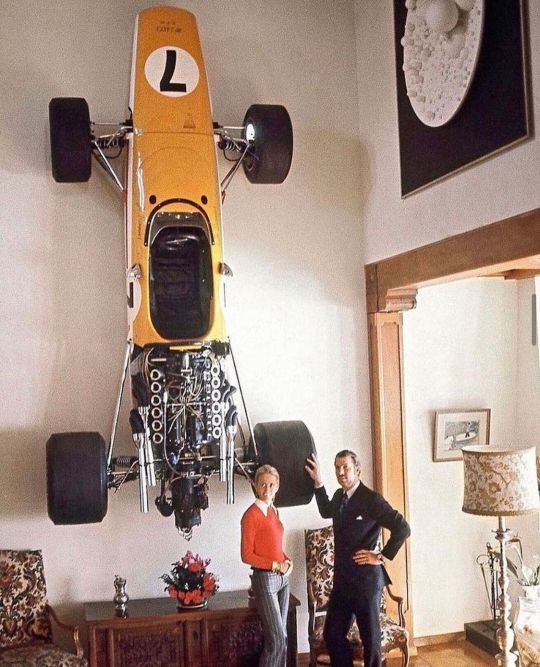
Chez Joachim Bonnier - Jo Bonnier a conduit cette McLaren M5A à moteur BRM V12 à la sixième place du Grand Prix d'Italie de 1968. - source Moto Vitelloni - Whells n'wings
74 notes
·
View notes
Text
1967 The Daily Mail Race of Champions at the #Brands_Hatch 🏁
Bruce Mclaren 🇳🇿 drives the #11 McLaren BRM M4B.
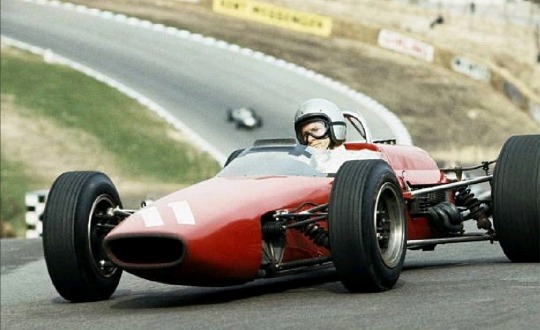
11 notes
·
View notes
Text

Jo Bonnier and the BRM V12 McLaren he drove in the 1968 Italian Grand Prix.
239 notes
·
View notes
Video
F1 1973 Montjuic [60 FPS] Onboard of Niki Lauda in BRM + Scenes from the...
Essa corrida em Montjuic, na Espanha, realizada em 1973, foi vencida pelo (à época favorito ao título) Émerson Fittipaldi, que aos 26 (pra 27) anos de idade ainda corria pela equipe Lotus, foi campeão mundial no ano anterior, e disputava pau a pau o título com grandes nomes como os saudosos Ronnie Peterson (1944 - 1978) e Françoise Cevert (1944 - 1973), e também com o grande escocês voador, Sir Jackie Stewart.
Em 1973 começavam a despontar grandes nomes do automobilismo, como por exemplo, o saudoso futuro tricampeão mundial Niki Lauda (1949 - 2019), e inclusive na temporada de 1973 mesmo, Niki marcos seus primeiros pontos em 2 anos correndo na categoria máxima do automobilismo, mas já no ano seguinte, o próprio Niki junto ao (também) saudoso e inesquecível piloto suíço Clay Regazzonni (1939 - 2006), saíram da retardatária BRM para a (desde sempre) favorita Ferrari e passaram a disputar o título de 1974 com o Émerson (Na temporada de 1974, tanto Émerson com Clay e Niki mudaram de equipe. Émerson saiu da Lotus e foi para a Mclaren, e Clay Regazzonni junto a Niki Lauda saíram da BRM e foram para a Ferrari, onde consolidaram grandes duelos e parcerias nas pistas do mundo).
Mas na verdade, o foco deste texto é sobre este circuito espanhol, que outrora foi palco de grandes duelos e vitórias.
Mas isso infelizmente perdurou até 1975, ano do primeiro título mundial do austríaco Niki Lauda.
A corrida de 1975 em Montjuic seria um grande espetáculo se não fosse pelos sucessivos e estarrecedores acidentes tanto em treinos como nas corridas que chegaram a vitimar não pilotos, e sim, infelizmente, torcedores que acompanhavam a corrida.
O último acidente desta lamentável corrida, ou seja, o mais grave, feriu o (também) saudoso piloto alemão Rolf Stommelen (1943 - 1983) e acabou vitimando cerca de 4, ou se não me engano 5 espectadores que acompanhavam o purgatório que ali acontecia.
Repito: se não fossem os sucessivos acidentes, a corrida continuaria normalmente.
Pela falta (extrema) de segurança, este autódromo não foi mais requisitado nos anos seguintes.
Pilotos como Graham Hill (1929 - 1975) e Émerson Fittipaldi reclamaram da segurança neste autódromo.
Não gosto de comentar sobre essa corrida,
pois o que viria a ser uma corrida de 75 voltas, por motivo de força maior, acabou em apenas 29.
Nesta corrida, o alemão Jochen Mass conquistou sua única vitória na categoria e a saudosa italiana Lella Lombardi (1942 - 1992) conquistou seu primeiro ponto. E claro, Lella se tornou a primeira e até hoje a única mulher que marcou ponto numa corrida da categoria maior do automobilismo.
Mas como a corrida acabou em 29 voltas, os pilotos que pontuaram do primeiro ao sexto lugar (padrão de pontuação da época) só fizeram meio ponto.
E nos anos seguintes, as corridas na Espanha ocorreram em outros circuitos menos perigosos, como por exemplo, os autódromos de Jarama e Jeréz de La Frontera.
0 notes
Photo
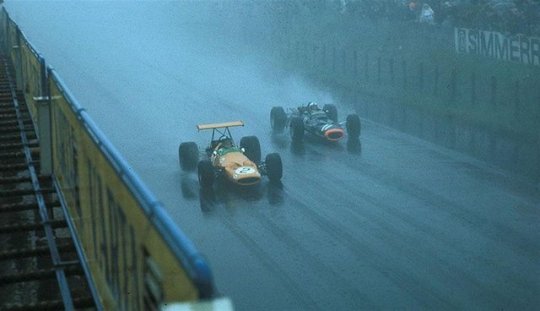
Bruce McLaren (#2 McLaren) battles with Richard Attwood (#11 BRM) in the wet in Germany.
FIA Formula One World Championship, Nürburgring Nordschleife, 1968 German Grand Prix
#formula one#formula 1#f1#nurburgring#nurburgring nordschliefe#1968#german grand prix#german gp#bruce mclaren#richard attwood#mclaren f1#brm f1#racing#motorsport#grand prix
84 notes
·
View notes
Photo
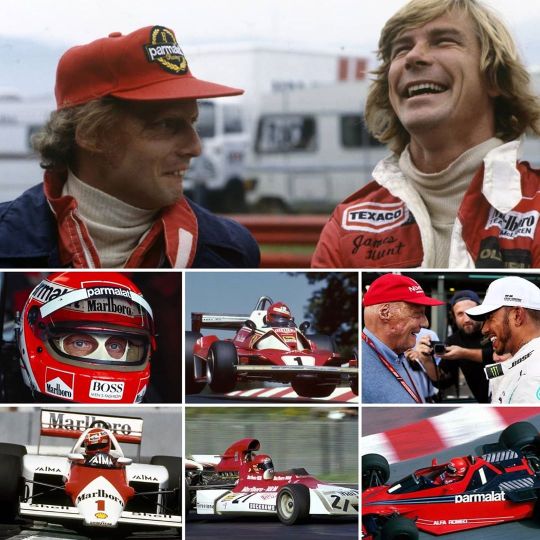
#inmemoriam - Un Campione, una Leggenda del Motorsport senza bandiera, perché Niki Lauda apparteneva a tutti i tifosi. Ad un anno dalla sua scomparsa, impossibile non ricordare il suo carisma come manager, uomo e pilota, le sue doti in pista, la sua capacità di rialzarsi dopo un terribile incidente e di tornare a vincere. Andreas Nikolaus Lauda era, é, e resterà sempre nel cuore degli appassionati del motorsport. #rip #nikilauda #rememberlauda #alwaysniki #truelegend #otd #formula1 #brm #ferrari #brabham #mclaren #f1 #jameshunt #lewishamilton #mercedesamgf1 #formel1 #motorsport #nestedia #formule1 https://www.instagram.com/p/CAZ4Ty-InD-/?igshid=1jxf8afrlbm2r
#inmemoriam#rip#nikilauda#rememberlauda#alwaysniki#truelegend#otd#formula1#brm#ferrari#brabham#mclaren#f1#jameshunt#lewishamilton#mercedesamgf1#formel1#motorsport#nestedia#formule1
0 notes
Text



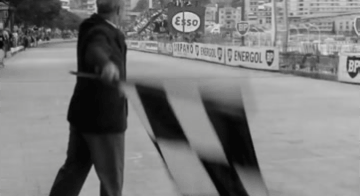
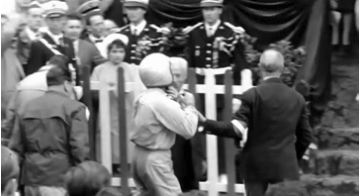

Bruce wins the 1962 Monaco GP 🇲🇨 after a 100-lap race 🏁
The race had a very confusing start, but the only driver that didn't hesitate was Willy Mairesse, whom blasted into the lead of the race: passing Bruce (3rd) and eventually bumping into Graham (2nd) and Jim (1st) on his way through; but as soon as he reached the Gasworks hairpin, he braked too late and missed the apex and slewed the back of his car, as it travelled across the circuit.
In almost perfect unison, for they had all an equal start, Clark, Hill and McLaren slammed on their own brakes, the Scot, the sharpest to react, almost came to a complete halt on the apex that Mairesse had just missed. Wider lines carried Graham and Bruce past Jim, both managing to find room either side of a sliding Mairesse.
Bruce found himself in the lead, but on the seventh lap he was passed by Graham; the BRM driver held the lead all the way until lap 92 (after various duels with Clark who then retired from the race on lap 55), when an engine failure handed the lead back to the young Kiwi, who with determination held on to win ahead of Ferrari's Phil Hill, who recovered from a spin earlier in the race and was catching up.
#how is he even standing???!!#after a 100-lap race i would be like nigel at the 84 dallas gp: passed out on the ground lol#bruce mclaren#classic f1#f1#formula 1#retro f1#f1 1960s#my bby kiwi 🧡💘
29 notes
·
View notes
Photo

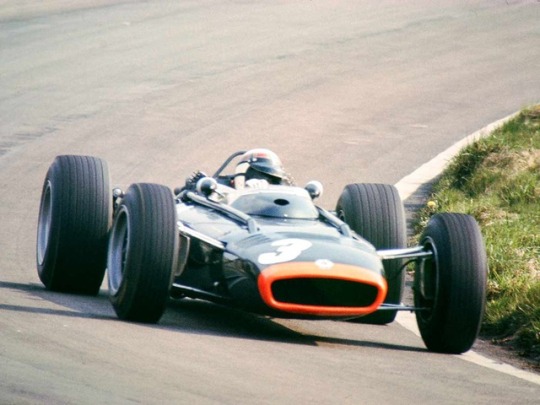

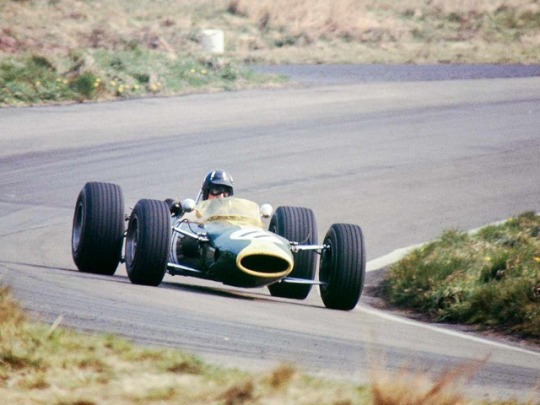
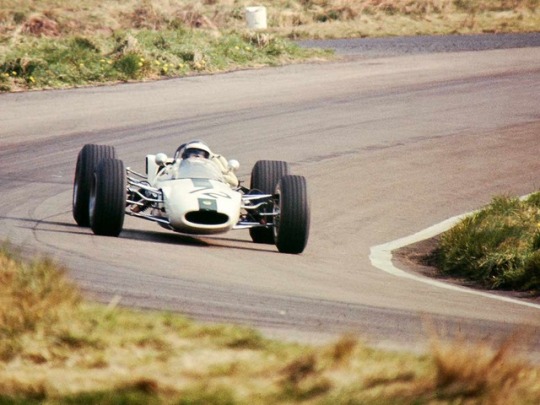
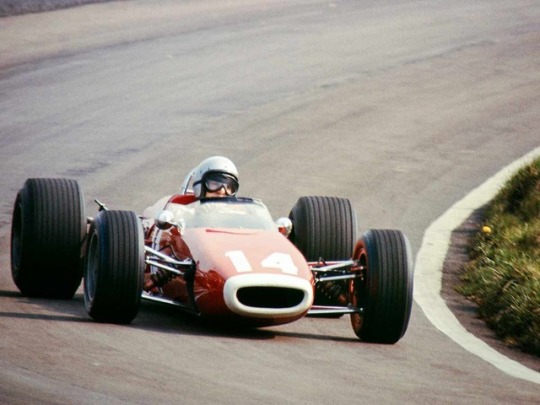
Photographs by Brian Watson from the 1967 Oulton Park Spring Cup.
1. Jack Brabham (Brabham BT20)
2. Jackie Stewart (BRM P83)
3. John Surtees (Honda RA273)
4. Graham Hill (Lotus F2 48-FVA)
5. Jackie Oliver (Lotus 41B)
6. Bruce McLaren (McLaren M4B)
#Brian Watson#1967#Oulton Park#Oulton Park Spring Cup#Jack Brabham#Jackie Stewart#John Surtees#Graham Hill#Jackie Oliver#Bruce McLaren#Brabham#BRM#Honda#Lotus#McLaren#Brabham BT20#BRM P83#Honda RA273#Lotus F2 48-FVA#Lotus 41B#McLaren M4B#Formula 1#Formula One#F1#F2#Formula 2#Formula Two
215 notes
·
View notes
Text
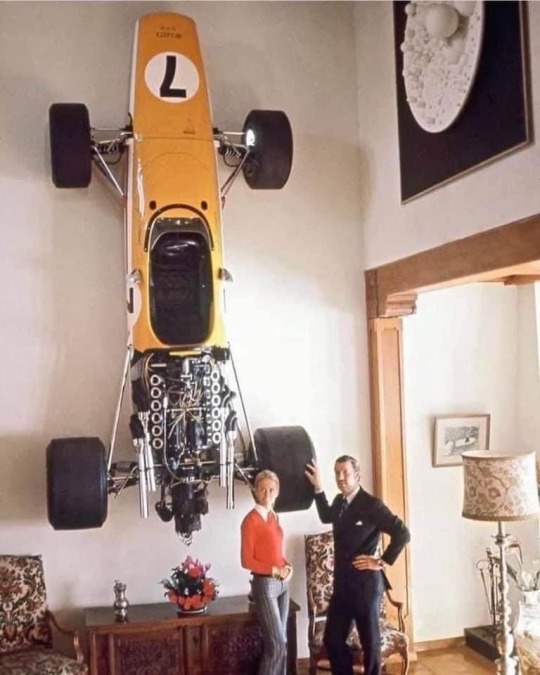
Jo Bonnier with the BRM V12-powered McLaren M5A he drove to 6th place in the 1968 Italian Grand Prix.
6 notes
·
View notes
Photo

Jean-Pierre Beltoise (BRM P201) devant Graham Hill (Lola T370 Cosworth) et Dave Charlton (McLaren M23 Cosworth) Gran Prix d'Afrique Du Sud - Kyalami 1974. © IMAGO ! Motorspor. - source Carros e Pilotos.
#jean-pierre beltoise#graham hill#dave charlton#brm#lola-cosworth#mclaren-cosworth#grand prix d'afrique du sud#kyalami
12 notes
·
View notes
Text
Graham Hill🇬🇧 Lotus
Jack Brabham🇳🇿 Brabham
Gurney🇺🇲 Eagle T1G,
Clark🏴 Lotus
Bruce McLaren🇳🇿 Eagle T1G,
Hulme🇳🇿 Brabham,
Amon🇳🇿 Ferrari,
Rindt🇦🇹 Cooper,
Irwin🇬🇧 BRM,
Stewart🏴 BRM,
Siffert 🇨🇭 Cooper,
Pedro Rodriguez 🇲🇽 Cooper,
Spence 🇬🇧 BRM, at the start.
#classic #formula1

6 notes
·
View notes
Photo

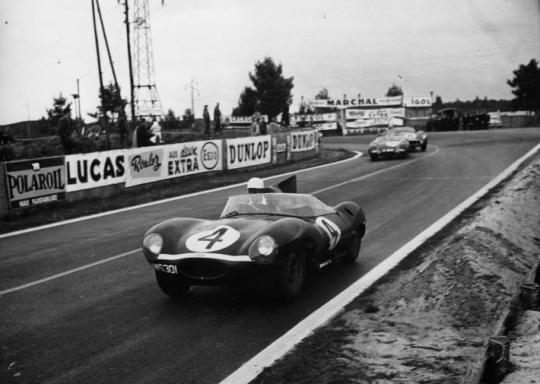


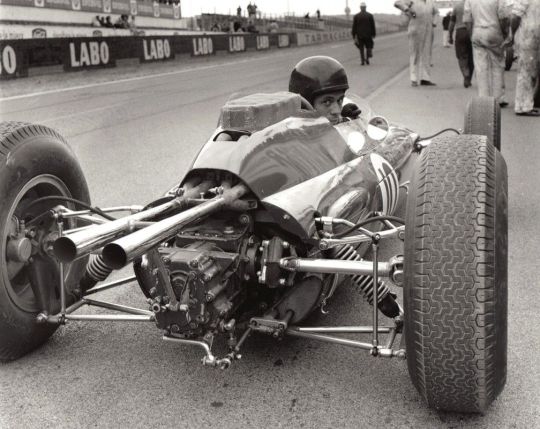

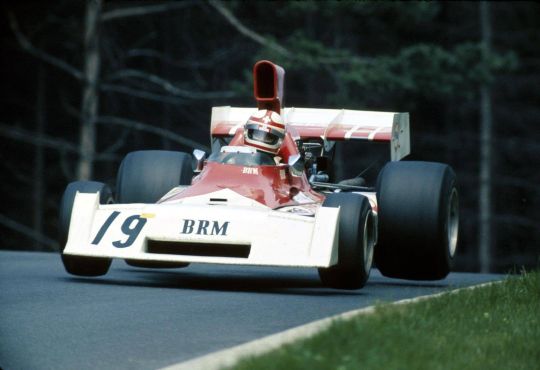
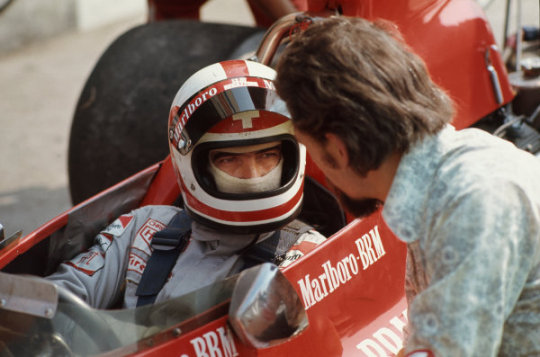
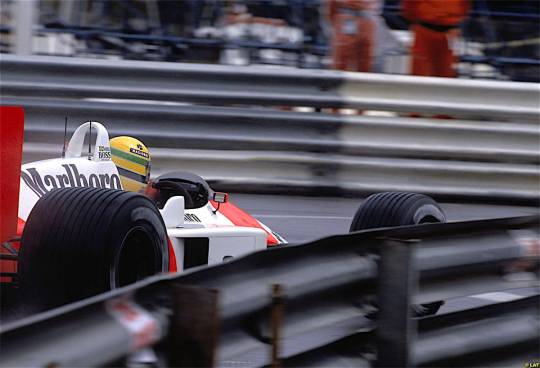
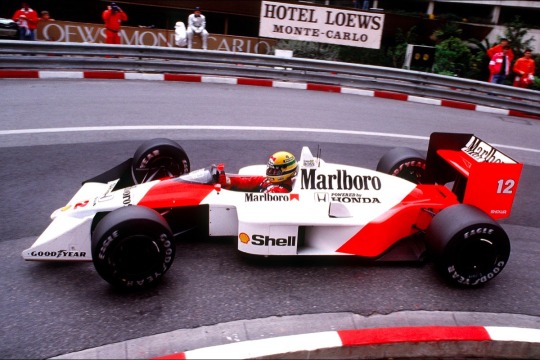
On a sunny quarantine sunday, here are five on-board racing videos for you to enjoy 5 different eras of racing and cars.
On-board with Mike Hawthorn - Le Mans 1956 - D-type Jaguar :
https://youtu.be/IpRFagIbcPE
On-board with Juan Manuel Fangio - Modena Autodrome 1957 - Maserati F1 :
https://youtu.be/5Xg4Fr9SY04
On-board with Jim Clark - Brands Hatch 1964 - Lotus F1 :
https://youtu.be/pzLJsxWSLT
On-board with Clay Regazzoni - Österreichring 1973 - BRM F1 :
https://youtu.be/KCyuRwH5JMM
On-board with Ayrton Senna - Monaco GP 1988 - McLaren-Honda F1 :
https://youtu.be/NeFqsWWG1qE
Have a good end of your weekend, be safe and take care of yourselves !
#petrolhead#vintage#cars#vintage cars#auto#automobile#vintage auto#classic cars#retro#nostalgia#racing#vintage racing#motorsport#f1#formula one#formule 1#ayrton senna#senna gtr#mclaren#monaco#le mans#jaguar#jim clark#lotus#brm#clay regazzoni#race cars#coronavirus#corona#virus
17 notes
·
View notes
Photo

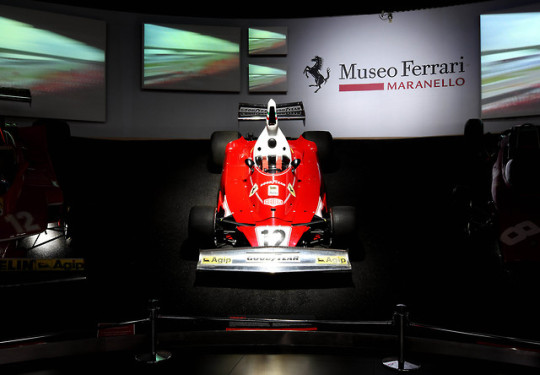
Ciao Niki
Ferrari pays tribute to the Austrian champion
A workaholic, a computer-like brain ahead of his time, a stickler for detail who could separate emotion and rational thought and go straight to the heart of the matter. But at the same time, a person who could have moments of madness, who, to take the title of his autobiography, went on a journey “to hell and back.” A man who found the strength to jump back in his racing car just six weeks on from that terrible accident which he miraculously survived. These were just some of the elements that made up Andreas Nikolaus Lauda, known to everyone simply as Niki. Last night, at the age of seventy, he passed away.
“This is a very sad day for me, having been fortunate to have actually seen him race and also for all fans of Ferrari and Formula 1,” commented Ferrari Vice President, Piero Ferrari. “Niki leaves us having suffered so much and that is painful for me. He won so much with Ferrari and with other teams too and he always remained a friend. He was a fantastic driver, an accomplished businessman and an amazing person. I will miss him.”
“My memories of Lauda go back to my childhood,” recalled Scuderia Team Principal Mattia Binotto. “When I was little I saw him and Regazzoni win for the Prancing Horse on race tracks all round the world. I was not yet ten and to me he seemed like a fearless knight. Once I came into Formula 1, my relationship with Niki was one of mutual respect. I think that thanks to his bravura and his undoubted charisma, he helped make this great sport well known and loved all over the world. I have fond memories of him telling me that my Swiss approach was just what was needed to bring order to the very Italian Ferrari! That was Niki all over, straight talking and direct and even if you didn’t agree with him all the time, you couldn’t help but like him.”
Lauda was born in Vienna on 22 February 1949. He was an innovator and a champion who brought a new way of thinking to his racing. When Niki first appeared on the Formula 1 scene, he came across as a stubborn young man, with strong self-belief, to the extent that he ignored the wishes of his family and took out a loan to follow his dream to race in Formula 1. In 1973, the Austrian drove for BRM alongside Clay Regazzoni and it was the Swiss driver who mentioned the youngster to Enzo Ferrari. In one of those typical moves that caught out everyone in the sport, Ferrari signed Lauda for 1974. Right from the start, at the races in Spain and Holland, Niki was a front-runner, fighting for the wins in the 312 B3-74. He missed out on the title, but in 1975 he would drive the 312 T. Lauda was fully immersed in the team, helping it to improve with his mania for detail and his attitude endeared him to Enzo Ferrari, who treated him like one of his family. Lauda and the Scuderia evolved into the perfect partnership and grit and determination brought win after win. In 1975, the Austrian took his first world championship crown, also helping the Prancing Horse to win the Constructors’ and Drivers’ titles for the first time after an eleven year wait.
The 1976 season got off to an encouraging start for the reigning champion. Niki won five of the first nine races – Brazil, South Africa, Belgium, Monaco, Great Britain – so that he had more than double the number of points of his closest rival. Then it was time for the German GP at the Nurburgring, the circuit known as the Green Hell, because it was so long, tricky and dangerous. On lap 2, Niki lost control of the car on the damp track and crashed heavily into the barriers. As a result, the car burst into flames. Thanks to the valiant efforts of other drivers, he was pulled from the wreckage, but he was seriously injured, to the extent he was given the last rites. But Lauda was not the sort to give up easily. He fought just as hard in his hospital bed as he had done on track and recovered in record time. Just six weeks later, he was racing again, although in great pain. He was determined to retain his title, but it was not to be. He missed out on the championship by a single point under a downpour at Fuji in Japan. Events had turned Lauda into a true hero, in sport and in life. His popularity transcended the world of racing as he entered the collective imagination, to the extent that his life was even turned into a film.
In 1977, Lauda won his second world championship, but it was also the year in which he severed his ties with the Scuderia and Enzo Ferrari. Lauda switched to Brabham for the following year but, on their own, neither he nor Ferrari managed to win. Niki briefly retired from the sport, before returning to take his third and final title in 1984, with McLaren.
Despite a turbulent end to the relationship with Scuderia Ferrari, the story of Lauda and Maranello would have a final chapter, when he returned as a consultant to the team in 1993. With his two titles and 15 wins over four seasons, Lauda is the second most successful driver for Scuderia Ferrari in Formula 1.
232 notes
·
View notes
Photo
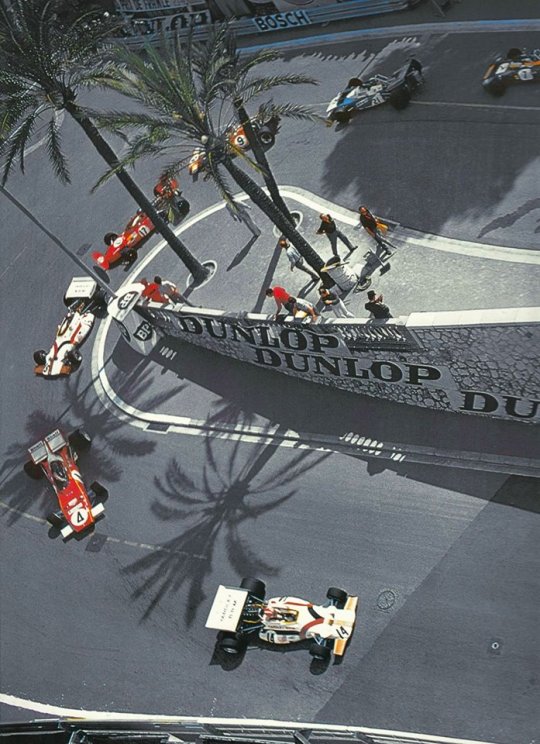
107 notes
·
View notes
Text
Fun Facts about Cal Jr.
Some neato details about Calvin Junior, as I write the next chapters for that actual project I have going on...yeah, remember that? (honestly I am really sorry about that school just caught up to me and everything)
Cal Jr. had always been at least a little interested in cars, but his big moment came when his ‘godpa’, Wick, brought him to his home in St. Louis for a summer, where he kept a fleet he’d started collecting after his business started up again in 34. Cal Jr. was then infatuated with cars, secretly learning to drive when he was 11, and beginning to race when he was around 14...although, obviously, he lied about his age.
Cal’s mother was famous. Quite famous, in fact. So famous that she managed to get him an opportunity with Lotus BRM, and possibly even with Ferrari, since she was friends with Enzo’s personal assistant. Cal tried for Ferrari, but didn’t make the team. Meanwhile, at Lotus, he was pretty good, but he was liked so much by his team mate, Jim Clark, (who was then the greatest driver in the world) that the team kept him. Cal said of Clark, quote, “He thought I was funny. It had nothing to do with me being as good as him, I wasn’t...but you just don’t say no to Jim Clark.”
Cal’s first win came at Monaco in ‘64, which was only his second year of competition, at the ripe old age of...20 and some change. He was the youngest driver to ever win there for a long time. He loved the area, but never lived there.
In 1965, he met his future wife, Beth Simmons, at Silverstone. The two started dating later that year and were married in 1966, in his home town of Burbank, California. They had two children; Milah Anne McMurray and Christine Ivy McMurray. Milah went on to become an applied french horn professor at Kent State, and Christine worked in engineering during the end of the Cold War.
In 1968, Cal Jr. left the Lotus BRM team before the start of the season, as his contract had ended. He raced for McLaren for the rest of his career.
Cal Jr. is still alive, at the age of 74, and Beth is still around too. In fact, he even has a grandchild, Connor, who recently signed up to race with Red Bull Racing.
7 notes
·
View notes
Text
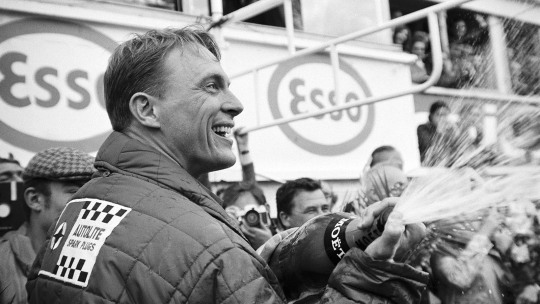
Happy birthday DAN GURNEY!!!!!!!!!!!!! (13/04/1931 - ∞) ⚡
Daniel Sexton Gurney, known as 'Dan', was born in New York but spent most of his life living in California, there he developed his passion for motor racing.
He studied engineering, which later would help him to build and drive cars at the Bonneville salt flats, but it was only in 1955 that he stepped up as a professional racer. In 1957 he was noticed by a Ferrari dealer and he was handed a factory drive for the 24 hours of Le Mans in 1958. The next year Dan got the chance to enter the world of Formula 1: he made his debut at the French GP driving for Scuderia Ferrari.
Overall in his F1 career he drove for various teams: Ferrari, BRM, Porsche and Brabham before creating his own team. Dan took the decision to start his own team in 1962, and by the end of 1965 he managed to create it and called it 'All American Racers'. Dan along with Bruce McLaren and Jack Brabham are the only team owners to have won a GP for their own team, while Jack is the only one to have won a championship for his own team.
He would retire from F1 in 1970 to focus on building up AAR, which became a dominant force in American Racing.
The American driver is also credited with the now common podium celebration of spraying champagne, he did it spontaneously on the podium after winning the 24 hours of Le Mans in 1967 and he was the first driver ever to use a full face helmet in a GP (it happened at the 1968 German GP).
21 notes
·
View notes